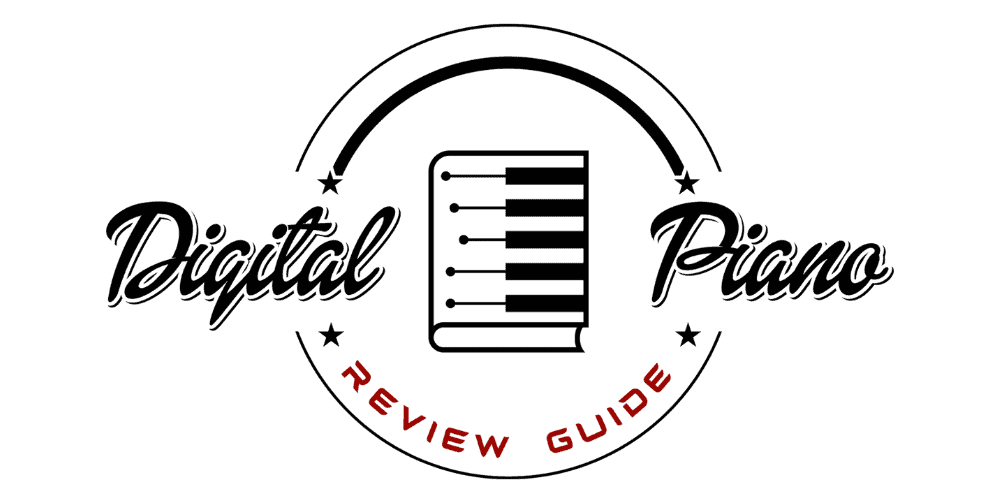Yamaha MOXF8 review

A few years ago, the Yamaha introduced an affordable series of workstations, also known as “Yamaha MO,” which included sounds of the good old Motif ES in a cheaper, lighter and instrument. This strategy worked quite well, as both the Yamaha MO6 and MO8 becoming increasingly popular among musicians looking for a reliable product in the intermediate price range.
Since then, each time Yamaha created a new flagship workstation, a new iteration of the MO series debuted on the market. After the MOX, based on the Motif XS workstation, Yamaha has launched the new MOXF line-up–which included 61-key and 88-key variations based on the Motif XF workstation.
Therefore, in this review, we’re going to review the 88-key Yamaha MOXF8. We’re going to go over its build, features, and sound quality, and then we’ll compare it to some of its very popular competitors to truly find out whether this worth it’s high price tag.
Below, please compare the Yamaha MOXF8 to other quality workstations worthy of your consideration. The table below is interactive, so you can sort by price, weight, number of keys, or customer review ratings:
| Photo | Model |
|---|---|
 | Roland JUNO DS61 |
 | Roland JUNO DS88 |
| Korg Kross 2 | |
 | Korg Minilogue |
 | Roland JD-XI |
 | Yamaha MX88 |
 | Behringer Monopoly |
 | Novation Impulse 61 |
MOXF8: THE LITTLE GIANT
The MOXF8 ships with the street price of $1699. It also comes with the following inside the box:
- Yamaha MOXF8 88-key music workstation
- Yamaha PA-150 AC adaptor
- USB cable
- Owner’s Manual
- Online Manual CD plus Steinberg Cubase AI Edition
The similarity to the Motif XF is easily noticeable when looking at the overall design of the MOXF8, which reprises the same dark appearance and style of its big brother. The workstation looks quite good despite the use of plastic materials in the chassis, which were chosen to keep it as much lightweight and portable as possible.
This was achieved also thanks to a wise placement of the two wheels (the Modulation and Pitch), which are now located on the upper-left side of the panel instead of the left side of the chassis (such as the S90XS) and by excluding the power unit from the chassis, using instead an external AC adaptor.
The interface includes a backlit LCD display placed on the center, two faders for the Master Volume and the DAW Level, a knob to adjust the volume of an aux input, a section with assignable buttons and knobs that allows to manage various parameters of the tones, as well as EQ, effects and amp simulators. Octave and Transpose can be controlled with specific buttons, which is ideal for using the keyboard during live shows.
There are also the Effect and the Seq Transport sections, the latter being particularly useful to control the multitrack sequencer or an external DAW via a PC/Mac through six transport buttons. On the right side, there are lots of buttons for navigating through the available options and sounds, to select or mute a specific part on each preset, enable/disable or even hold the four arpeggiators, to split or layer two sounds, and more.

And before we move on, please take a look at some of the best selling digital keyboards currently available for sale online:
| BEST SELLERS |
|---|
| 1) Yamaha MX88 |
| 2) Korg Minilogue XD |
| 3) Roland JUNO-DS88 |
EXPANDED… IN A FLASH
The Yamaha MOXF8 features the same AWM2 sound engine of the Motif XF, with up to 741MB of wave samples and Expanded Articulations: basically, every single sound of the flagship workstation is now included in its affordable iteration, with a 128-note maximum polyphony, a 16-part multi-timbral capacity, more than 1150 available tones and the VCM (Virtual Circuit Modeling) engine, that allow users to layer up to eight voices and add to each one of them a specific effects chain.
You can expand the internal ROM with a large variety of first-party and third-party sounds or expansions via the Flash Memory slot, with a 1GB maximum capacity of additional voices. This is one of the real strengths of the Yamaha MOFX8: in fact, while the Motif XF allows for two additional flash memories to be installed, having a huge set of great tones in a product that costs and weights more than an half is definitively a good thing for musicians.
The 88-key version of the new MOFX workstation includes the usual GHS Graded Hammer Standard keyboard (now with Initial Touch), which is the cheapest weighted solution from Yamaha that, while doing pretty good in affordable digital pianos under the $1000 range, is not performing as good as competitors’ alternatives, such as the Korg NH hammer action keyboard, used in the Krome workstation.
That said, Yamaha’s GHS still does a pretty job in providing a great array of dynamics and nuances in all the available sounds, especially the acoustic and electric pianos, but we would have preferred a better keybed given the retail price of the MOXF8.
LET’S GROOVE
The Yamaha MOXF8 has so many great features that it’s nearly impossible to list them all, but one of the most interesting is the incredible Arpeggios section, which offers up to 8000 different phrases that can be used both in live shows or in sequencer mode. If you need a particular pattern to add a bit of groove to your songs, be sure that you’ll find at least one in the huge catalog set up by the company.
Different genres and instruments are available, but the greatest thing is the capability of instantly add a groove into the 16-track sequencer and creating a much more complex song, starting with an idea and then enriching it with other instruments and patterns.
You can of course edit the patterns as you wish, add effects and then use the USB port to seamlessly connect the MOXF8 to a PC or Mac as a proper audio interface, in order to finalize the project with additional plugins and virtual instruments, though we have to say that the workstation itself offers all the professional tools to create a full song from the beginning to the end, without the need of connecting it to an external device.
CHOOSING THE BEST SOLUTION
While the MOXF8 is certainly one of the best music workstations currently available in the intermediate price range, there are also other solutions for those wanting a different sound palette than Yamaha’s. And they all take a totally different approach to sound programming and live usage.
One of these products is the aforementioned Korg Krome, which offers a less complex user interface thanks to its practical multi-touch color touchscreen, a huge array of hi-res voices thanks to its Kronos-derived sound engine, a better 88-key hammer-action keybed and a slightly cheaper price (usually $1649, but you can hunt for better offers online).
Another product to keep an eye on is the Roland FA-08, a new 88-key workstation derived from the INTEGRA-7 sound module that offers a very practical user interface (divided into few intuitive sections), with many real-time controls (that ensure a very fast workflow during live shows), a large color LCD display, the Ivory Feel-G keyboard (which, while not necessarily being the best hammer-action keyboard on the planet, is still better than Yamaha’s GHS), and even a full sampler based on the renowned SP-404SX, which allows users to create their own sounds via the onboard mic/line inputs.
However, this solution is a bit more expensive than MOXF8 (street price $1799), and many people may choose to opt for an even better product if they are considering investing so much money into an “affordable” solution. One such solution is the S90XS, which is a Yamaha music synthesizer that features 88 notes and a balanced weighted hammer action system.
The natural evolution of the famous S90ES, which features the sound engine of the Motif XS and a few exclusive piano tones, this heavy-duty product is one of the most popular instruments used by professional musicians, thanks to one of the best keyboard actions and sounds set available, as well as the live managing of different layers and split points.
Keep in mind that, despite being a product of the last generation, this flagship hybrid (sort of between a stage piano and a workstation) still ships for $2399.
Choosing between these products is once again a matter of personal preference, but hopefully this provides you with a little insight as to what the MOXF8 is up against.
CONCLUSION
The MOXF8 is one of the best affordable workstations currently available on the market, thanks to the integration of the Motif XF’s sound engine, the chance to expand the sound set with 1GB of additional voices, a full 16-track sequencer and lots of other great features that comes in a lightweight and compact package.
If you love Yamaha products and sounds, there’s a great chance that you’ll enjoy using the MOXF8—no matter what other instruments the competition is offering on the market.
RATING: 4.5/5
If you enjoyed this review and would like to see more reviews of workstations, pianos, or keyboards, be sure to bookmark Digital Piano Review Guide. Please visit and follow us on Facebook, too!
You Might Also Like:






